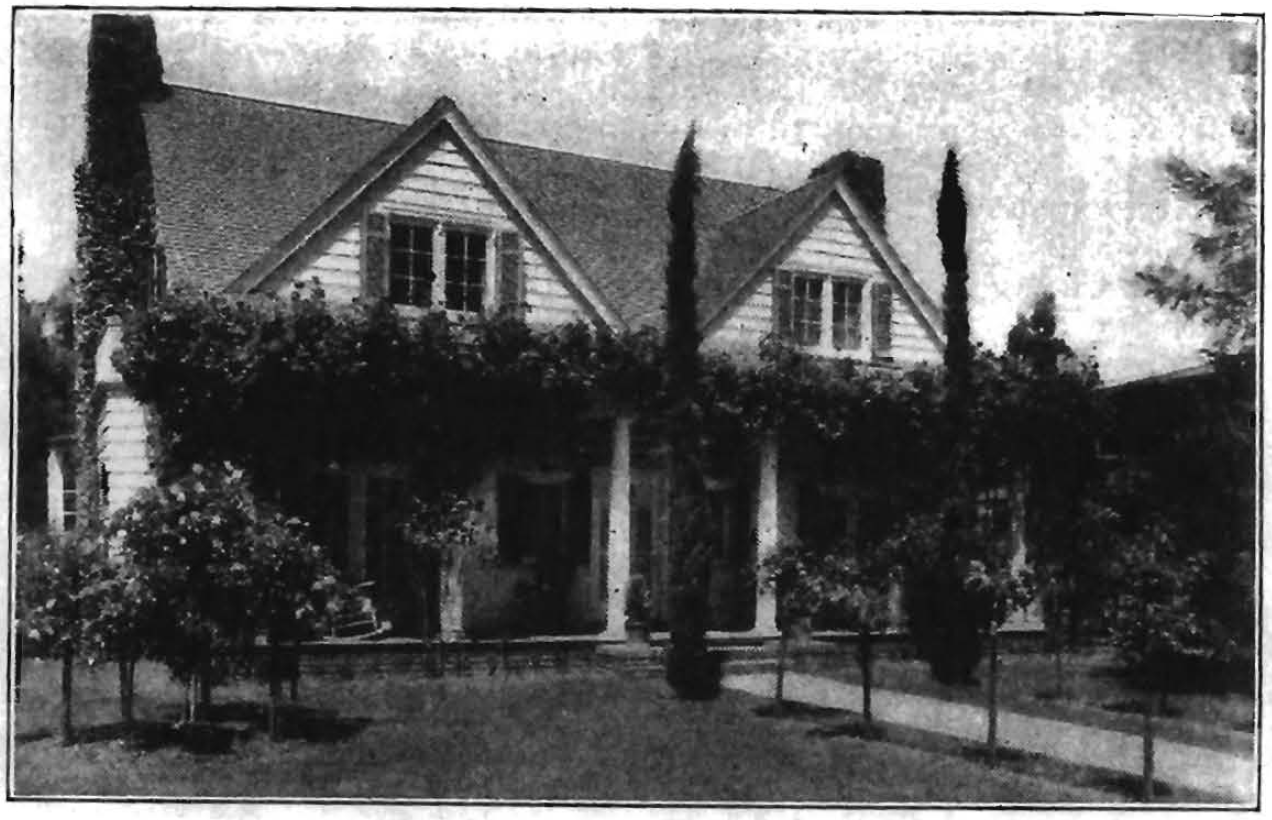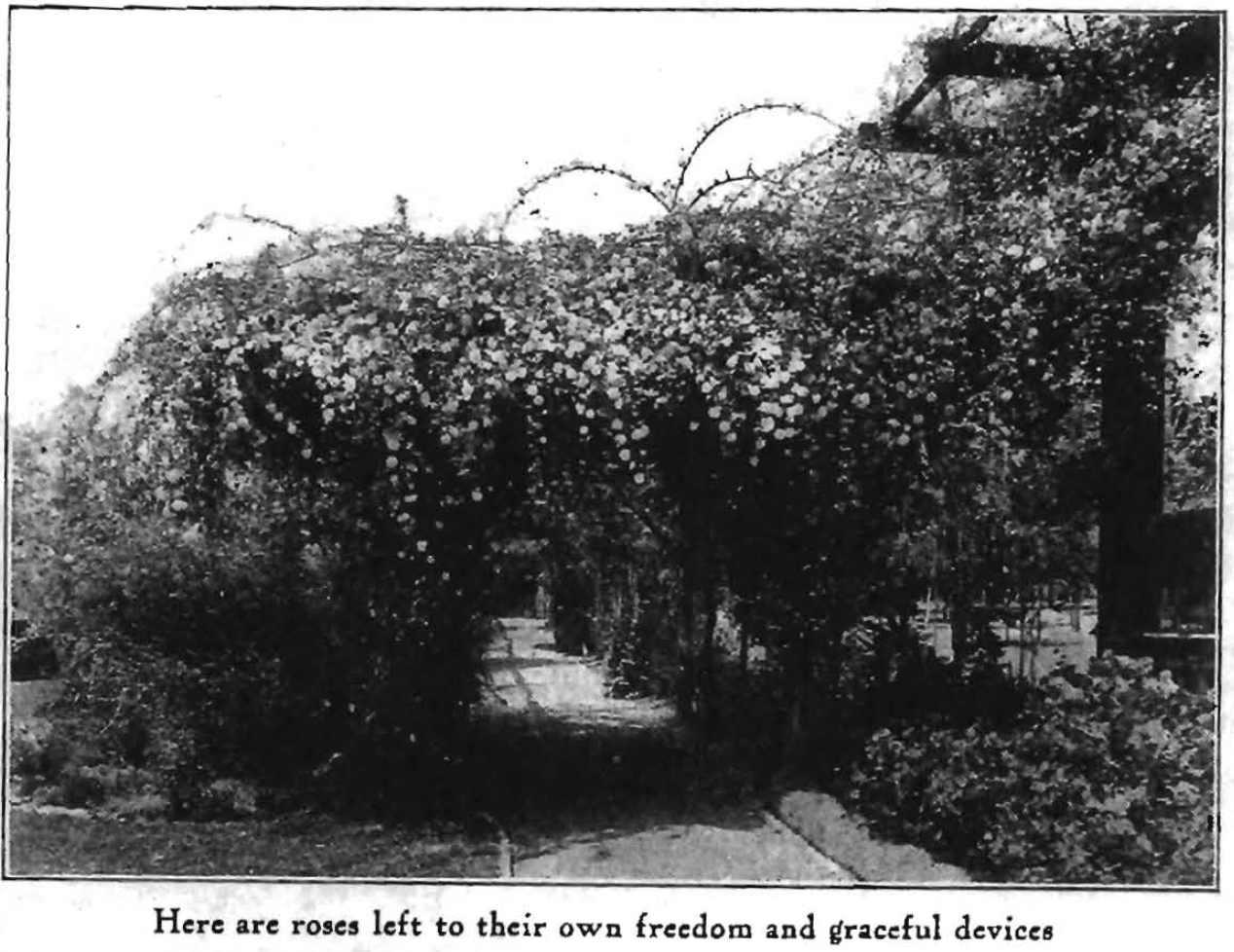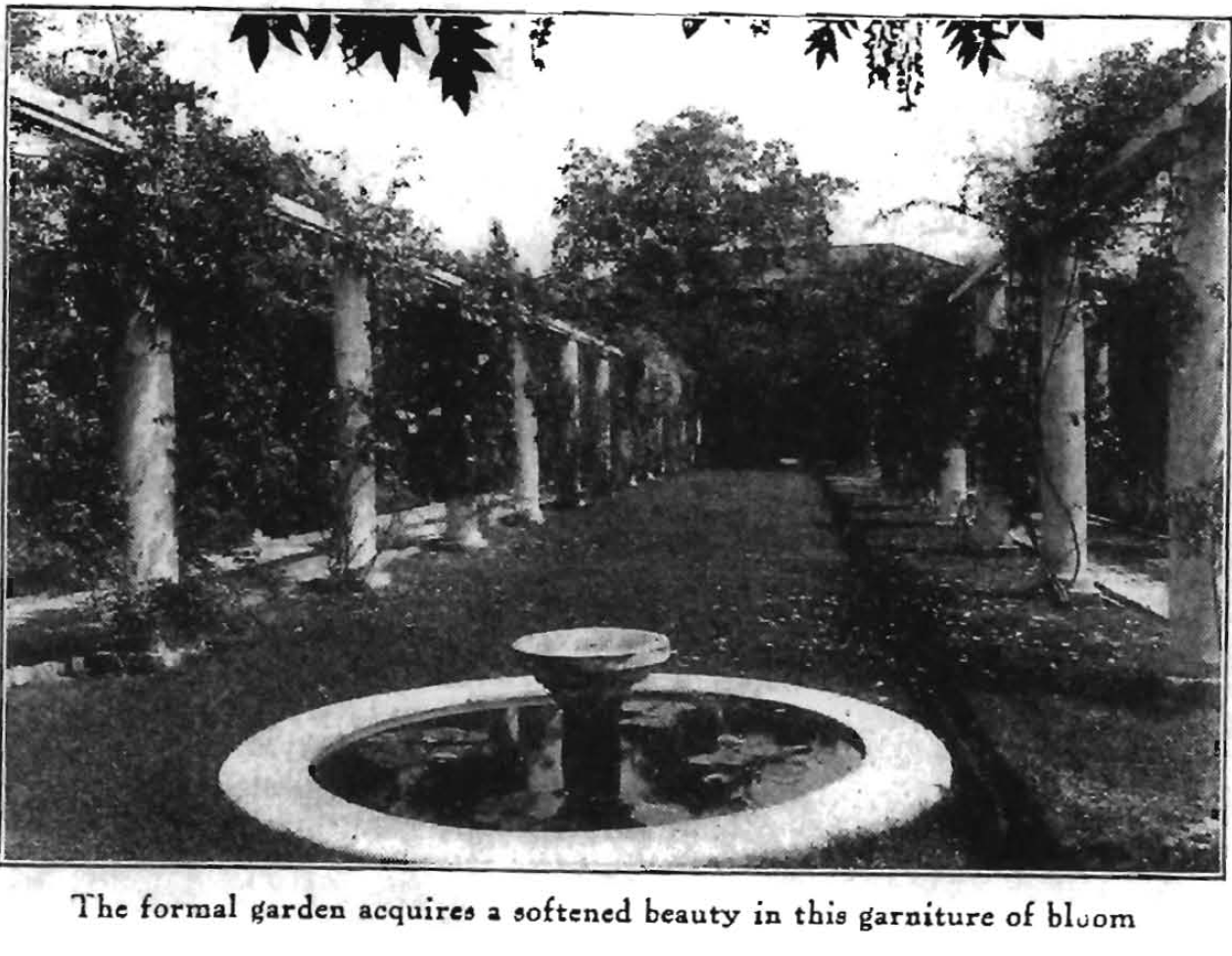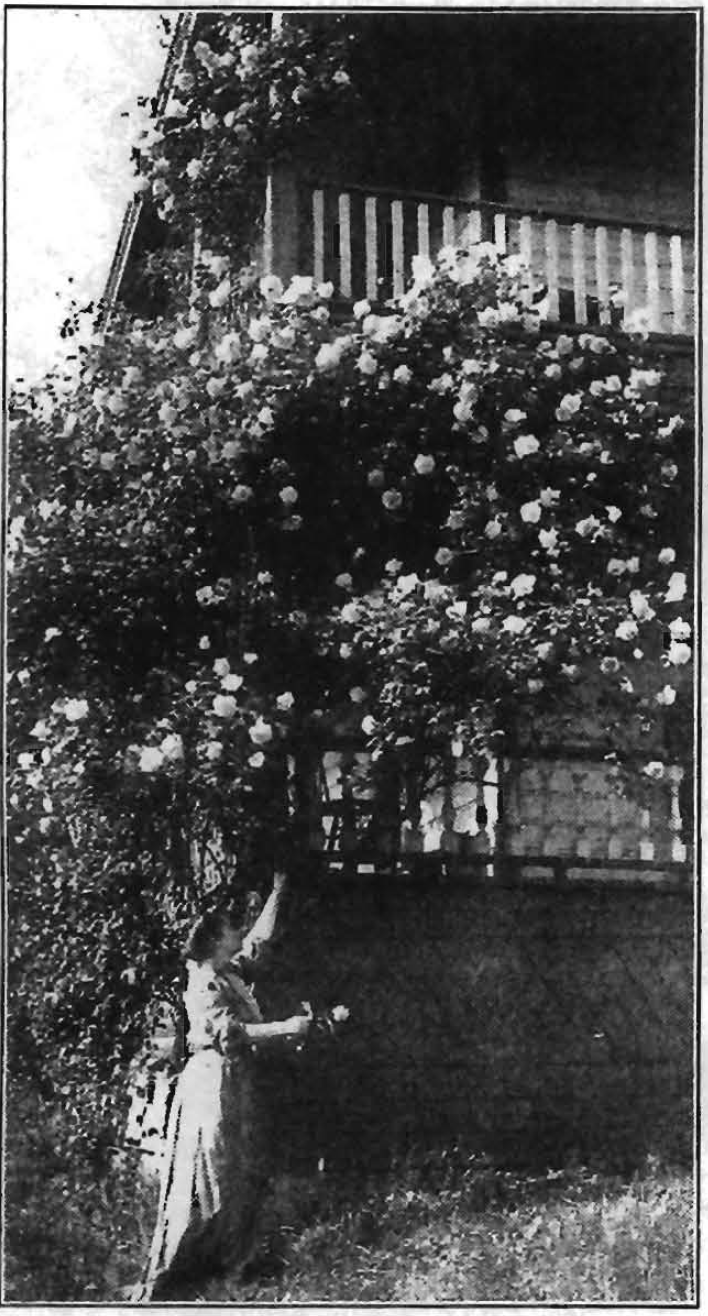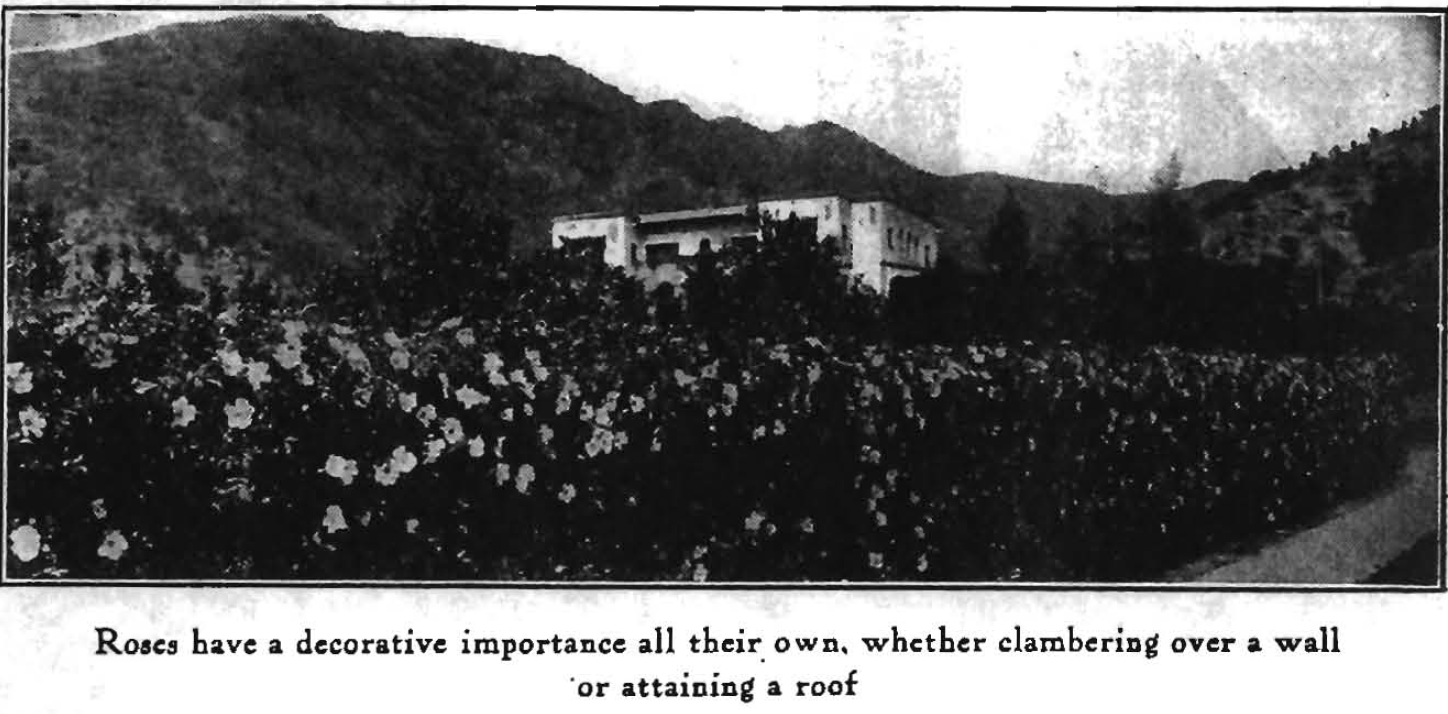How will you have your roses?
Brownfield, Marion. "How will you have your roses?" Sunset 45, no. 2
(August 1920): 66-68.
[https://library-projects.providence.edu/rosarium/view?docId=tei/rg0043.xml]

In selecting roses for the garden it is fascinating to have many types and colors, although professional gardeners usually maintain that each type needs a bed to itself and that each color is also better alone, to obtain full effect. Moreover, a mixture of roses with other flowers is somewhat frowned upon. These rules are perhaps wisely followed for the average rose garden, but there are some charming exceptions! Who has not seen hedges of roses of two colors enchantingly blended? And one who has seen walls covered with snowy cherokees punctuated every six feet or so with crimson ragged robins will not be likely to forget the sight. Equally picturesque in the garden—especially close to a flag, brick or even wooden walk—are ragged robins quaintly flanked with fleur-de-lis, for the ragged robin with its showery petals is essentially a rose grown for garden effect rather than a flower to cut for the house.
Another point in choosing roses is to remember that the foliage lasts longer than the blossom. In general, roses are divided into two classes or types, according to their blooming season. One type blooms for a period but once in a season, and the other blooms intermittently. A cherokee is an example of the kind that blooms only once a year, while many tea roses bloom almost continuously until winter.
As roses can be used to secure either formal or informal effects in the garden, both climbers and bush roses will be sought for the dignity of leaf and flower, fragrance and that riot of color so glorious on a summer day.
As to the practical side of planting roses, the best position is an eastern or southern slope protected from wind. Some shade is beneficial. Indeed, it is interesting to note the depth of color that a rose will develop in a semi-shaded situation compared with the same rose placed in a sunnier spot. All roses so best in a deep rich clay loam, the California adobe being excellent. Success depends upon careful preparation of the ground, followed by proper pruning and soil cultivation. Any reliable book on rose culture will outline all the requirements if no experienced grower is available for advice. Teas and hybrid teas may be planted as close as eighteen inches if intended to bear choice roses, but hybrid perpetuals need more room. The latter are very hardy and of rapid growth. Hardiest of all for hedge purposes are the rugosas.
Training the rose in the way it should go is a delightful occupation. In general, pruning encourages growth. Those inclined to hang back can actually be forced ahead with pruning, while the overgrown bush may be left alone, except for cutting away dead wood and ingrowing branches, after the blooming season is over. Rose trees are the products of nursery man’s art, rather than the effect of pruning. With climbing roses only the weak branches need to be pruned and the tips shortened to keep the blossoms within reach and the vine within desired limits.
To train the climbing rose one may choose a wire fence or wire netting tacked to fence posts, a wooden lattice work, a trellis or rose frame or a pergola. Ladders between French doors, against a house are very popular and the arch just over the door of the cottage or colonial entrance is exceedingly cosy and attractive. Roses combined with the rustic are charming, and so the frame arbor or summer house built of rough bark-covered branches should have consideration by the trellis builder. "The first essential of a pergola is that it lead somewhere." An attractive objective for the rose-covered pergola is a sun dial, bird bath, fountain, garden pool, seat, summer-house porch or another flower garden!
